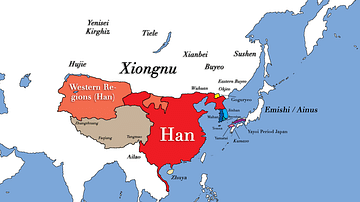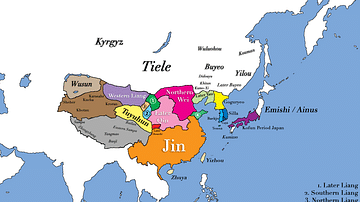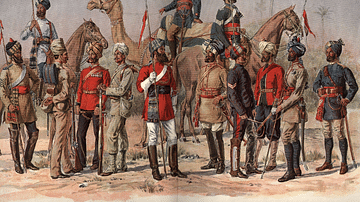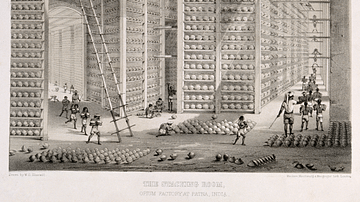Search
Search Results

Image
Maryland, Dutch East Indies
A Swiss plantation in the Dutch East Indies bought in 1881 by Karl Krüsi (1855–1925) and named after Mary, his wife. In 1893, he sold it for a fortune and built the Villa Sumatra Zurich’s Sumatrastrasse. Manager House in Deli, Karl Krüsi...

Image
East Asia in the year 1 CE
This map shows the boundaries of all major civilizations in East Asia at the beginning of the first millennium, with italics indicating nomadic bands and other tribal societies.

Image
East Asia in 400 CE
This map shows all major civilizations of East Asia at the beginning of 4th century CE. Italicized texts indicate nomadic bands or tribal societies.

Image
East Asia in 500 CE
This map shows the territories of all major civilizations in East Asia in the year 500 CE. Italicized texts indicate nomadic bands or tribal societies.

Image
Map of East Asia
A map of East Asia showing China, Korea and Japan.

Image
East Asia circa 300 CE
This map shows all major civilizations of East Asia at the beginning of the 3rd century CE. Italicized texts indicate nomadic bands or tribal societies.

Image
Plate with Monogram of the Dutch East India Company
A plate from the Edo period (1615-1868) in Arita, Saga Prefecture in Japan, 1670-1740. "VOC" is the monogram for the Dutch East India Company, whose name in Dutch is Vereenigde Oostindische Compagnie. Inspired by contemporary and previous...

Image
East Pagoda, Yakushiji
The East Pagoda of Yakushiji temple, Nara, Japan. The three-story pagoda is original and dates to the 8th century CE and rises to a height of 33 metres (108 ft).

Image
East India Company Madras Army
A 19th-century illustration showing officers and sepoys (Indian recruits) of the East India Company's Madras army.

Image
Opium Warehouse of the East India Company
A c. 1850 print showing an opium warehouse of the East India Company in Patna, India. Opium was dried into large balls and then packed into chests for transportation to China.